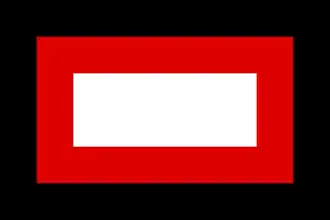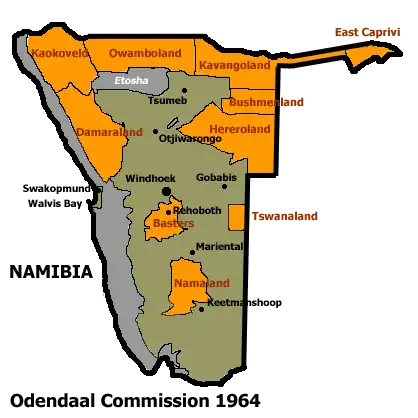Rehoboth (homeland)
Rehoboth Basterland | |||||||||
|---|---|---|---|---|---|---|---|---|---|
| 1979–1989 | |||||||||
 Flag | |||||||||
Location of Rehoboth within South West Africa | |||||||||
Map of Rehoboth | |||||||||
| Status | Bantustan | ||||||||
| Capital | Rehoboth | ||||||||
| History | |||||||||
• Established | 1979 | ||||||||
• Re-integrated into Namibia | May 1989 | ||||||||
| Currency | South African rand | ||||||||
| |||||||||

Rehoboth (or Basterland) was a Bantustan in South West Africa (present-day Namibia) intended by the apartheid-era government to be a self-governing homeland for the Baster people in the area around the town of Rehoboth.
The Bantustan existed until 29 July 1989, a few months prior to the Independence of Namibia.
Governance
The Rehoboth Self-government Act, 1976 established a Government of Rehoboth consisting of a Legislative Council with the ability to pass legislation known as "Acts" and a Kaptein's Council, led by an elected Kaptein.[1] The office of Kaptein itself dates to the period of German colonial rule.
Leaders
| Tenure | Incumbent | Affiliation |
|---|---|---|
| 2 July 1979 to May 1989 | Johannes "Hans" Diergaardt Kaptein of the Basters |
RFP |
See also
References
- ^ "Official Gazette extraordinary of Rehoboth" (PDF). Archived from the original (PDF) on 2015-12-30.
External links
- Rehoboth Basters Archived 2010-02-27 at the Wayback Machine, information on the history of the Baster community in Namibia.